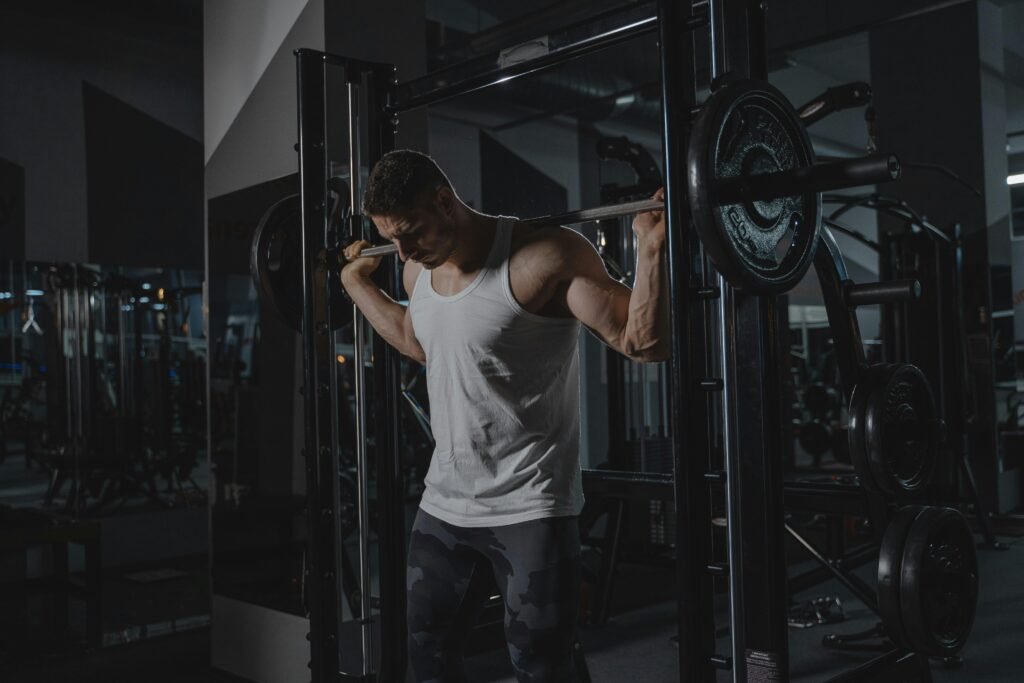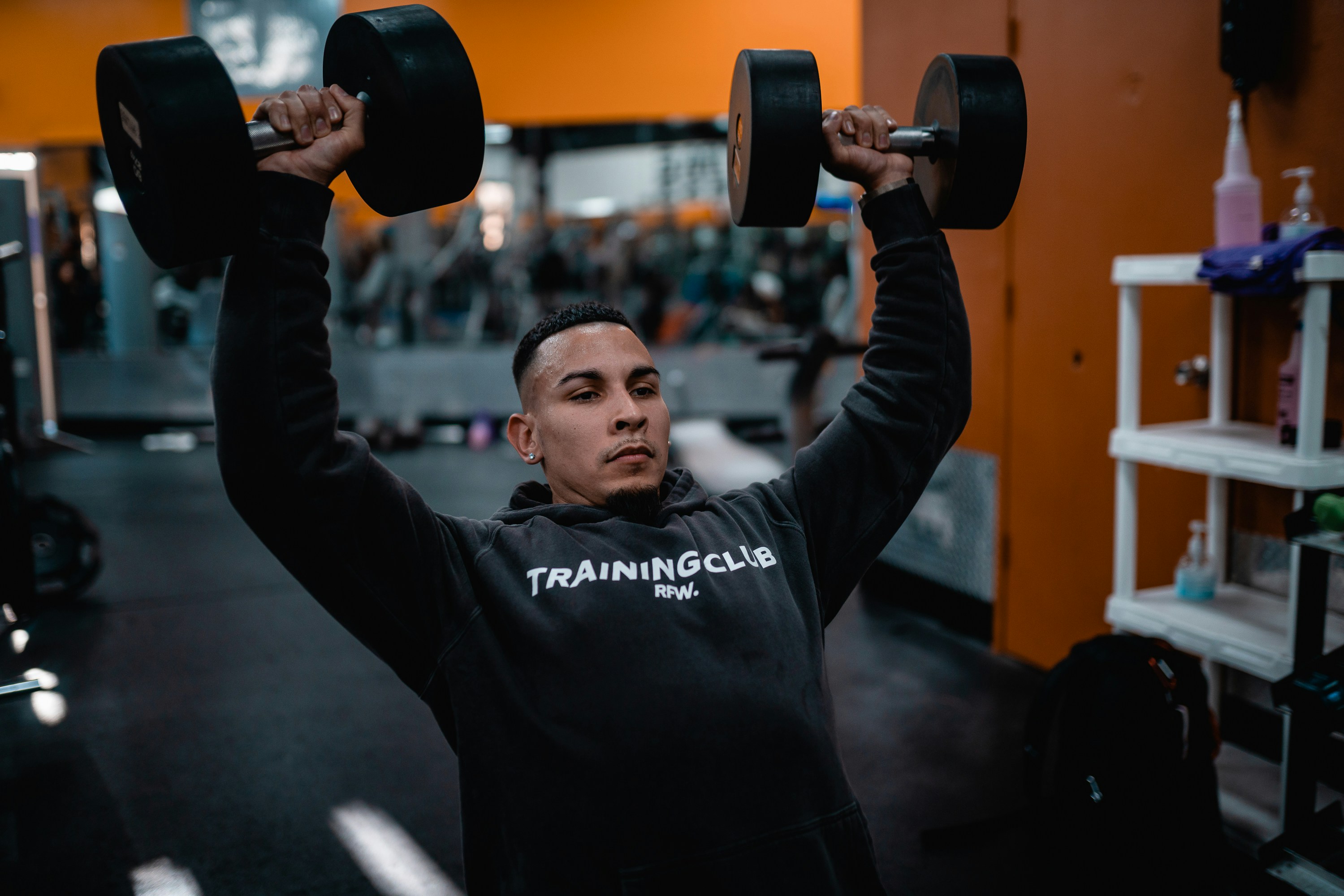
Table of Contents
Training Intensity vs Training Volume
When designing an effective workout program, two major factors come into play: training intensity and training volume. Both are crucial pieces of the puzzle, but they influence your progress in different ways depending on what you’re aiming to achieve. Intensity refers to how hard you’re pushing yourself in a given set, often tied to the percentage of your one-rep max (1RM), while volume refers to the total amount of work you perform over a session or week. Some training styles prioritize lifting heavy weights for fewer reps to maximize strength, while others emphasize higher reps and more sets to drive muscle growth. Understanding the difference between intensity and volume — and more importantly, knowing how to balance them at the right times — can be the key to unlocking better strength, size, endurance, and overall performance. It’s not just about working harder; it’s about working smarter. Whether you’re chasing bigger lifts, building more muscle mass, improving your athletic performance, or simply trying to stay consistent in the gym, mastering the relationship between intensity and volume is a skill that every serious lifter needs in their toolkit.
Defining Training Intensity
Training intensity refers to the level of effort expended during a workout session, typically quantified as a percentage of an individual’s one-repetition maximum (1RM). This metric serves as a baseline to determine how much weight a person can lift for a single repetition of a given exercise. For instance, lifting at 70% of one’s 1RM would indicate a moderate level of intensity, while lifting at 90% represents a high intensity. Understanding this concept is crucial as it directly impacts the type of muscle fibers recruited during resistance training.
Training intensity plays a significant role in determining which muscle fibers are activated during exercise. High-intensity training primarily engages fast-twitch muscle fibers, which are responsible for generating force and power. These fibers are essential for building muscle hypertrophy, as they have a greater propensity for growth compared to their slow-twitch counterparts. In contrast, moderate to low-intensity workouts tend to recruit slow-twitch fibers, which are more associated with endurance activities rather than muscle building.

Defining Training Volume

Training volume is a critical concept in the realm of resistance training, particularly in relation to hypertrophy, or muscle growth. It refers to the total amount of work performed in a workout session or over a designated training period. Training volume can be quantitatively expressed using the formula: sets x repetitions x weight lifted. This equation offers a straightforward method to calculate the overall workload imposed on the muscles during exercise. For instance, if an individual performs three sets of ten repetitions of an exercise with a weight of 50 kilograms, the training volume would be 3 x 10 x 50, resulting in a total volume of 1500 kilograms.
The relationship between training volume and workload is significant, as it highlights how increased volume can induce greater muscle fatigue and, subsequently, stimulate muscle growth. When individuals lift heavier weights or increase the number of sets and repetitions, they place their musculature under higher stress. This stress is a key driver of the physiological adaptations that occur with strength training, notably muscle hypertrophy. It is essential, however, to balance training volume with recovery, as excessive volume without adequate rest can lead to overtraining, undermining the potential benefits.
Moreover, the frequency of workouts also plays a vital role in optimizing training volume for hypertrophy. Engaging in more frequent training sessions allows for increased total volume across multiple workouts, provided the individual manages recovery effectively. Research suggests that distributing training volume throughout the week, rather than concentrating it into fewer sessions, can enhance muscle growth opportunities. Therefore, understanding and properly managing training volume, along with workout frequency, is crucial for anyone aiming to achieve optimal hypertrophy through resistance training.
Understanding Hypertrophy
Hypertrophy refers to the increase in muscle size as a result of physical training, particularly resistance training. This phenomenon occurs through the enlargement of muscle fibers, leading to greater muscle mass and strength. The underlying biological processes that promote hypertrophy are complex, involving various cellular and molecular mechanisms that respond to stimuli from exercise.
There are two primary types of hypertrophy: myofibrillar and sarcoplasmic. Myofibrillar hypertrophy is characterized by an increase in the size and number of myofibrils, the contractile elements within muscle fibers responsible for force generation. This type of hypertrophy typically results from heavy weightlifting and is more closely associated with increased strength. On the other hand, sarcoplasmic hypertrophy involves an increase in the sarcoplasm, the fluid and energy-storing substances in the muscle cells, leading to enhanced endurance and metabolic capacity. Understanding these two types is crucial for individuals targeting specific fitness goals, whether they are focused on strength or muscular endurance.
Resistance training plays a pivotal role in stimulating muscle cells to grow. When muscles are subjected to stress, such as during resistance exercises, microscopic tears occur within the muscle fibers. In response, the body initiates repair mechanisms that involve the release of hormones and growth factors. These processes lead to an increase in protein synthesis, ultimately resulting in muscle hypertrophy. By strategically varying the intensity and volume of training, individuals can influence the extent and type of hypertrophy achieved.
Thus, grasping the concept of hypertrophy and its underlying mechanisms is essential for athletes and fitness enthusiasts alike. It lays the groundwork for optimizing training programs designed to maximize muscle growth. By integrating knowledge about training intensity, volume, and their effects on hypertrophy, individuals can tailor their approach to meet specific muscle-building objectives efficiently.
The Relationship between Intensity and Volume
When it comes to optimizing muscle hypertrophy, the relationship between training intensity and volume is paramount. Training intensity refers to the amount of weight lifted relative to one’s maximum capacity, while training volume encompasses the total amount of work performed, calculated by the product of sets, repetitions, and load. Both factors play crucial roles in stimulating muscle growth, yet their interplay can be complex.
Research indicates that higher training intensity is often essential for recruiting more muscle fibers, particularly the type II fibers that are most responsible for growth. For instance, studies suggest that lifting weights at 70-85% of one’s one-repetition maximum (1RM) may generate optimal hypertrophic responses due to the increased mechanical tension placed upon the muscles. However, this is where volume comes into play. Higher volume, characterized by exceeding the total reps and sets, can lead to greater metabolic stress and muscle fatigue, which are also important stimuli for stimulating hypertrophy.


Fitness experts frequently emphasize the necessity of balancing intensity and volume. Renowned strength coach Eric Cressey points out that, “While intensity is vital for muscle fiber recruitment, volume is what ultimately drives growth over time.” This perspective aligns with findings in a myriad of studies that reveal that a moderate level of both intensity and volume frequently yields superior muscle growth compared to extremes of either factor. For individuals aiming to build muscle, this dual approach allows for effective progression while minimizing the risks of overtraining and injury.
As lifters experiment with various combinations of intensity and volume, the importance of individualization becomes apparent. Factors such as training experience, recovery ability, and personal goals should be considered when determining the ideal balance. In this way, the relationship between intensity and volume can be optimized for maximum hypertrophic benefits.
The Role of Individual Differences
When considering the best approach for hypertrophy, it is essential to recognize that individual differences play a significant role in determining the most effective training strategy. Factors such as age, experience level, body type, and genetic predisposition can considerably influence one’s response to training intensity and volume.
Age is a crucial factor, as older individuals may experience a decline in muscle recovery capacity and hormonal levels compared to younger individuals. Thus, seasoned lifters may benefit more from increased training volume to compensate for slower recovery, while younger lifters might gain better results from higher intensity due to their typically greater resilience. Experience level further influences the effectiveness of training regimens; novice trainees often respond well to higher volume since they have yet to attain training adaptation while advanced lifters may need to incorporate higher intensity to continue progressing.
Body type, categorized under somatotypes, also dictates how one should approach hypertrophy. Mesomorphs may excel with a balance of both training intensity and volume, while ectomorphs, known for their leaner physiques, may require a higher caloric intake and possibly a greater focus on intensity to stimulate muscle growth effectively. Conversely, endomorphs may find themselves responding better to moderate intensity and higher volume, as their natural propensity to gain mass could contribute to hypertrophy with a strategic approach.
Genetics, often an overlooked factor, plays a foundational role in muscle fiber composition and individual recovery rates. Those with a higher proportion of fast-twitch muscle fibers may respond more favorably to training intensity, while individuals leaning towards slow-twitch fibers might benefit more from varying training volume. Overall, recognizing these individual differences is vital, as there is no one-size-fits-all approach. Personalizing training regimens can significantly enhance hypertrophy outcomes, leading to more effective results for each individual. By tailoring training strategies to fit personal profiles, individuals can optimize their hypertrophy potential efficiently.
Practical Applications for Bodybuilders
When it comes to hypertrophy, understanding the balance between training intensity and training volume is crucial for bodybuilders and fitness enthusiasts alike. Both factors play vital roles in stimulating muscle growth; therefore, implementing them effectively in training routines can lead to superior results. It is essential to adopt a strategy that aligns with individual fitness goals and preferences.
For those prioritizing training intensity, a practical approach would be to focus on lifting heavier weights for fewer repetitions. For instance, a typical workout might involve performing compound exercises such as squats, deadlifts, or bench presses, with a rep range of 4 to 6 and using weights that challenge the muscles significantly. Rest periods should be extended, typically between 2 to 4 minutes, to ensure the body can recover sufficiently between sets. This method not only emphasizes the intensity of the lifts but also promotes strength, which can translate to better hypertrophic outcomes.
In contrast, bodybuilders aiming to integrate more volume into their routines could benefit from higher repetition ranges, between 8 to 12 reps, while incorporating various isolation exercises like bicep curls, tricep extensions, and leg presses. Here, the focus should be on lighter weights that can still elicit muscle fatigue. Shorter rest periods, around 30 to 90 seconds, will allow for a greater total number of sets, leading to increased metabolic stress that fosters muscle growth.
Tracking progress is vital to determine the effectiveness of either training strategy. Bodybuilders should maintain a training log, noting exercises, weights, repetitions, and overall feelings during workouts. Regularly assessing these metrics can help in making necessary adjustments to ensure continual progression. Ultimately, a personalized balance between intensity and volume, informed by individual responses, can significantly enhance hypertrophy outcomes.
Common Misconceptions About Training Intensity and Volume
When discussing hypertrophy, training intensity and volume frequently become focal points of debate, leading to several misconceptions among fitness enthusiasts. One prevailing myth is that “more is always better.” This notion suggests that increasing either volume or intensity indefinitely will lead to superior muscle growth. However, research indicates that both intensity and volume have optimal ranges that should be observed. Overly high volumes can lead to overtraining, diminishing returns, and increased injury risk, counter to the desired outcome of muscle hypertrophy.
Another common misunderstanding is the belief that high intensity makes volume irrelevant. While it is true that training at higher intensities can facilitate muscle growth, relying solely on this approach can hinder overall progress. High-intensity workouts require ample recovery due to the stress they impose on the body. If not supplemented with appropriate training volume, the potential for hypertrophy may be compromised. Studies show that a combination of both moderate to high volume and varying intensity levels creates an optimal environment for hypertrophy by increasing overall work done and stimulating different muscle fiber types.
Additionally, some athletes may believe that training intensity and volume should remain static, failing to recognize the importance of periodization. Effective training programs often cycle through different phases of intensity and volume to prevent plateaus and promote continual adaptation. Misunderstanding these principles can lead to stagnant progress and potential demotivation in reaching hypertrophic goals.
Lastly, it is crucial to highlight that individual responses to training may vary based on genetics, training experience, and personal goals. Therefore, falling prey to generalized statements regarding training intensity and volume can divert one from their unique, potential pathway to success in hypertrophy. A judicious approach, incorporating both aspects aligned with personal attributes, promises a more effective strategy for muscle development.
Adaptations and Periodization Strategies
Understanding muscle adaptations is crucial for effective training toward hypertrophy. When considering the relationship between training intensity and volume, it becomes evident that both play significant roles in muscle growth. High-intensity training, which typically involves lifting heavier weights, primarily stimulates neuro-muscular adaptations, enhancing the motor unit recruitment and force output. Conversely, high-volume training focuses on increasing the total number of repetitions and sets, promoting metabolic stress and muscle damage, key elements that drive hypertrophy.
To maximize muscle growth and prevent stagnation, employing periodization strategies is essential. Periodization refers to the systematic planning of training cycles, where variations in volume and intensity are applied over time. This structured approach allows for increased training efficiency, where athletes can alternate between phases of high intensity and high volume. For instance, a common model involves a hypertrophy phase with high volume and moderate intensity, followed by a strength phase that emphasizes lower volume with higher intensity. This cyclical method not only optimizes muscle adaptations but also combats adaptation fatigue, reducing the risk of plateaus.
Implementing periodization can be done through linear or undulating models. Linear periodization progresses steadily from higher volume to higher intensity over several weeks, while undulating periodization involves more frequent fluctuations in training intensity and volume within a week. Both models have their benefits, allowing athletes to tailor their training based on specific goals, recovery, and individual responses to training stimuli. As athletes cycle through these phases, they can achieve continual progression, thereby enhancing muscle hypertrophy and overall performance.
Conclusion: Finding Your Balance
In the quest for optimal hypertrophy, understanding the interplay between training intensity and training volume is essential. Throughout the exploration of these two facets of strength training, it becomes clear that neither approach is unequivocally superior. Instead, the effectiveness of either training method can vary significantly depending on an individual’s specific goals, experience level, and physiological responses. Training intensity, which refers to the level of effort or weight lifted relative to one’s maximum capacity, plays a pivotal role in stimulating muscle growth. Conversely, training volume, defined by the total amount of work performed (sets, reps, and weight), is equally important in promoting hypertrophic adaptations.
It is crucial for lifters to recognize that both intensity and volume contribute to muscle development. A balanced approach that incorporates both strategies can lead to enhanced hypertrophy outcomes. For some athletes, focusing on higher intensity with lower volume might spur rapid strength gains, while others may find that a greater volume with moderate intensity produces more substantial muscle growth over time. As such, experimentation with various training protocols is recommended to identify what resonates with one’s personal preferences and training style.
Moreover, it is important to note that consistency in training is paramount for achieving hypertrophy. Regular adherence to a structured program, complemented by adequate nutrition and recovery, will amplify the results of any training regimen. Nutrition should provide the necessary nutrients to facilitate muscle repair and growth, while recovery periods are crucial for allowing muscle adaptation to occur. Ultimately, a harmonious balance of training intensity, volume, and supportive lifestyle components will yield the best results in the journey toward hypertrophy.
If you found this post to be helpful, then you may be interested in the rest of our blog page here.
At Gear Affiliate, we always want to give our readers more resources to research. Below are a few sources that we have found to be helpful relating to this topic.


